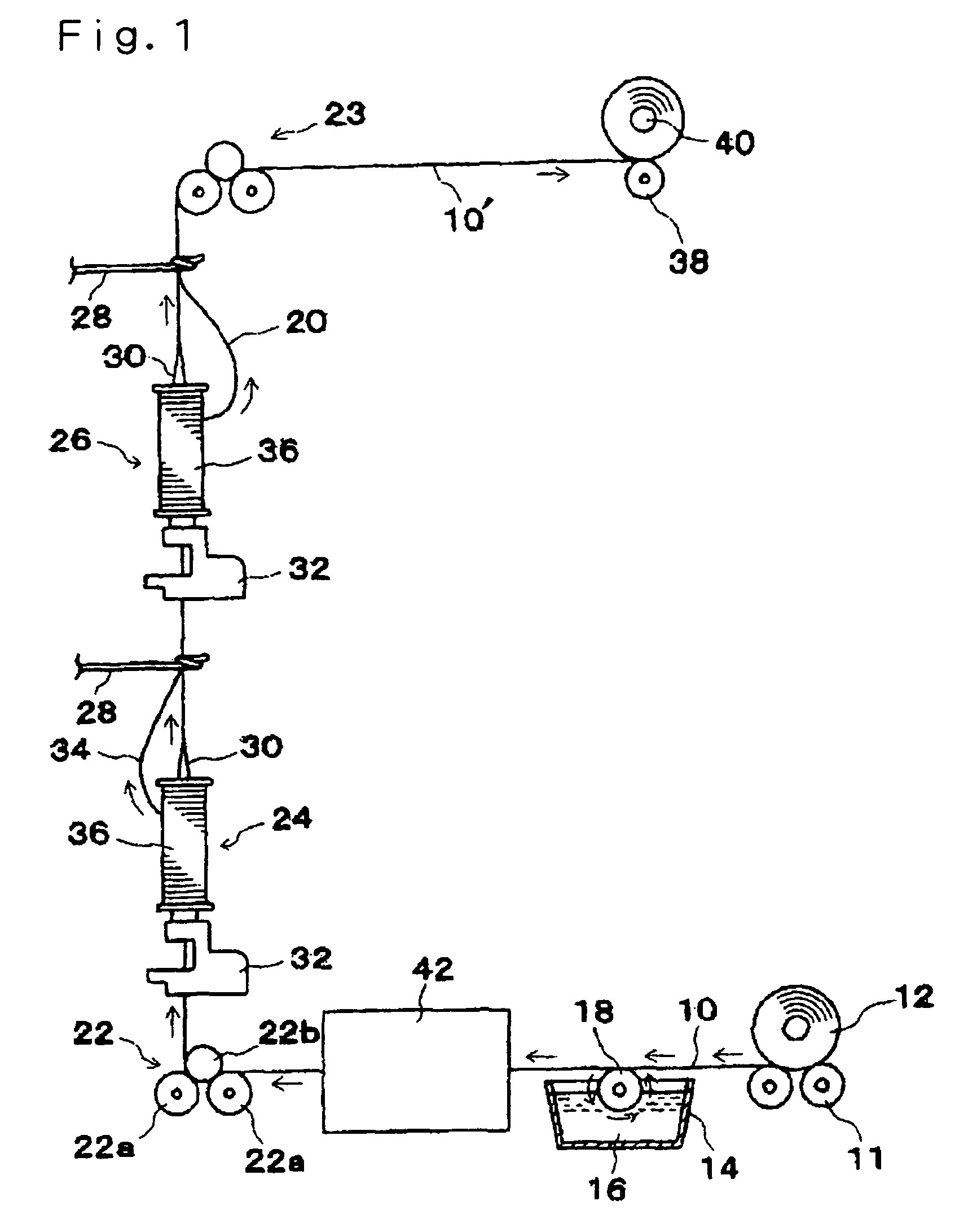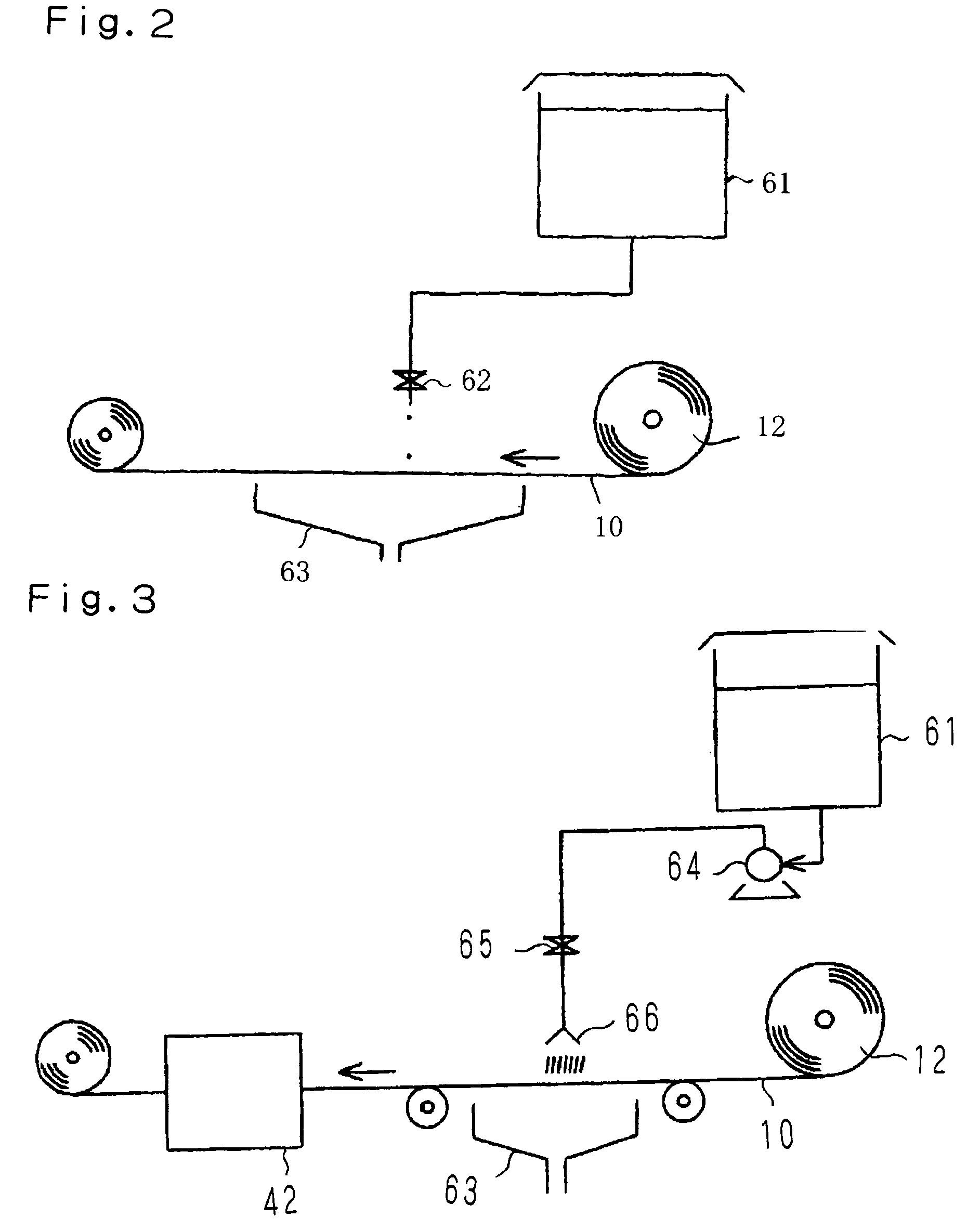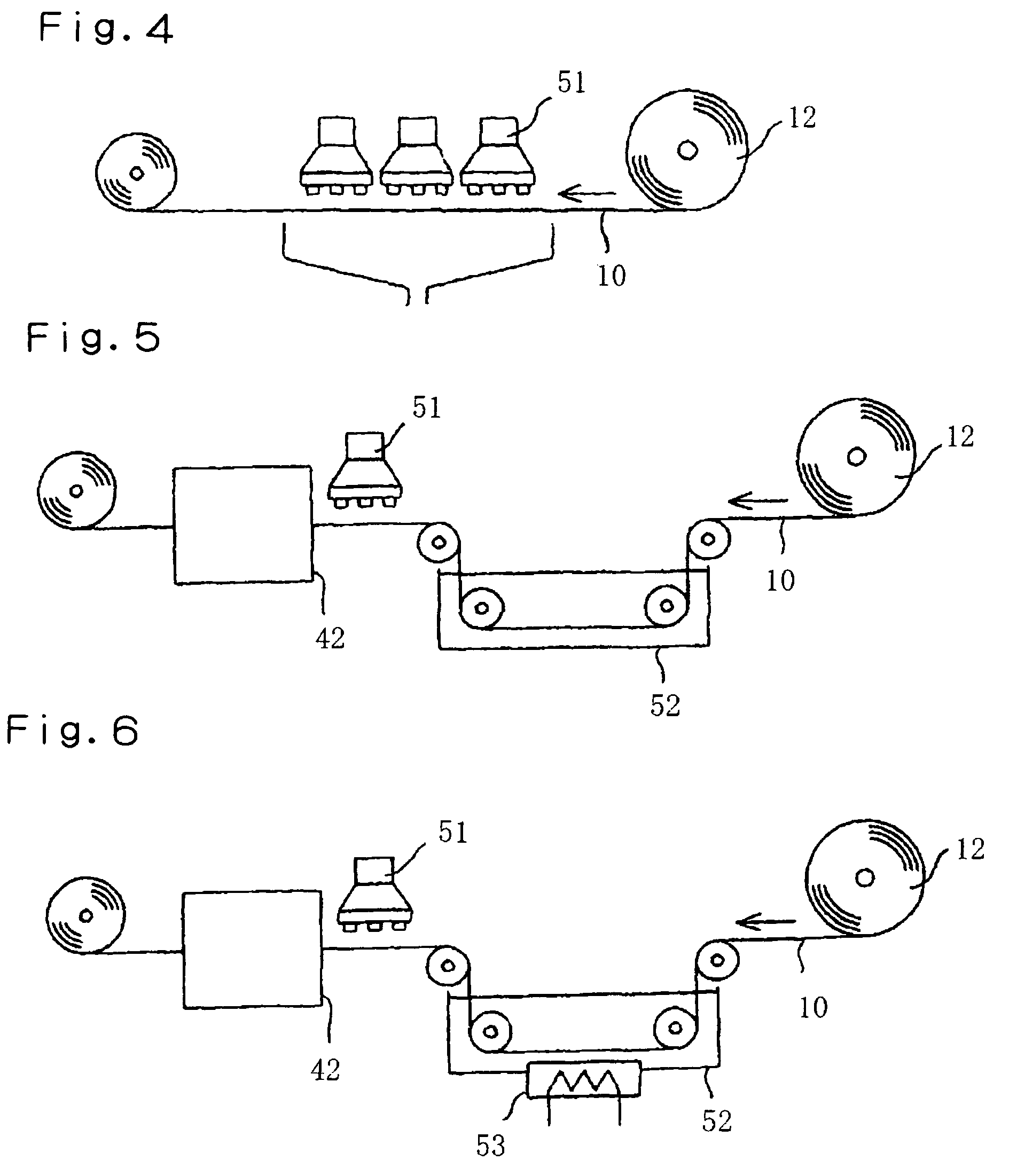Isotropic pitch-based carbon fiber spun yarn, composite yarn and fabric using the same, and manufacturing methods thereof
a technology of carbon fiber and composite yarn, which is applied in the direction of weaving, synthetic resin layered products, transportation and packaging, etc., can solve the problems of high elastic modulus, difficult to obtain high tensile strength spun yarn, and limited application of fabrics, so as to prevent the occurrence of thread breakage, improve the work environment, and prevent the generation of dust
- Summary
- Abstract
- Description
- Claims
- Application Information
AI Technical Summary
Benefits of technology
Problems solved by technology
Method used
Image
Examples
reference example 1
[0117]Manufacturing isotropic pitch-based carbon fiber spun yarn of 1500 deniers, and the number of twists of 180 turns / m, heat-treated at the heat temperature 1000° C.:
(1) Fabrication of Isotropic Pitch-Based Carbon Fiber Mat
[0118]High-boiling fraction (so-called ethylene bottom oil) remaining after fractional distillation of olefins such as ethylene, propylene by performing heat decomposition on petroleum naphtha was subjected to a heat treatment at 380° C. and then subjected to distillation under reduced pressure at 320° C. and 10 mmHg abs., thereby obtaining pitch having carbon content percentage of 94.5% by mass, an average molecular weight of 620, and a softening point (with an elevated flow tester) of 170° C.
[0119]This pitch was melt-spun by use of two horizontal centrifugal spinning machines having a nozzle diameter of 0.7 mm, the number of nozzles equal to 420, and a ball diameter of 200 mm while setting a process amount per machine equal to 10.8 kg / h (×2 machines), revolut...
reference example 2
[0124]Manufacturing isotropic pitch-based carbon fiber spun yarn of 1500 deniers, and the number of twists of 180 turns / m, heat-treated at the heat temperature of 2000° C.:
[0125]The procedures similar to those of Reference Example 1 were conducted except that the sliver obtained by the carding process with the carding machine used in Reference Example 1 was formed into a 198000-denier sliver by performing a heat treatment at 2000° C. for 1 hour in a nitrogen atmosphere. As a result, isotropic pitch-based carbon fiber spun yarn having the tensile strength of 27 N, the extension percentage of 2.6%, and 1500 deniers was obtained.
reference example 3
[0126]Manufacturing isotropic pitch-based carbon fiber spun yarn of 1500 deniers, and the number of twists of 180 turns / m, heat-treated at the heat temperature of 2400° C.:
[0127]The procedures similar to those of Reference Example 1 were conducted except that the sliver obtained by the carding process with the carding machine used in Reference Example 1 was formed into a 198000-denier sliver by performing a heat treatment at 2400° C. for 1 hour in a nitrogen atmosphere. As a result, isotropic pitch-based carbon fiber spun yarn having the tensile strength of 27 N, the extension percentage of 2.6%, and 1500 deniers was obtained.
PUM
| Property | Measurement | Unit |
|---|---|---|
| length | aaaaa | aaaaa |
| length | aaaaa | aaaaa |
| diameter | aaaaa | aaaaa |
Abstract
Description
Claims
Application Information
 Login to View More
Login to View More - R&D
- Intellectual Property
- Life Sciences
- Materials
- Tech Scout
- Unparalleled Data Quality
- Higher Quality Content
- 60% Fewer Hallucinations
Browse by: Latest US Patents, China's latest patents, Technical Efficacy Thesaurus, Application Domain, Technology Topic, Popular Technical Reports.
© 2025 PatSnap. All rights reserved.Legal|Privacy policy|Modern Slavery Act Transparency Statement|Sitemap|About US| Contact US: help@patsnap.com



